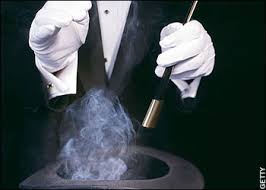The case of the disappearing decay?
Last week a patient came into the office to have a cavity filled. She requested a copy of her radiographs be emailed to my office prior to her visit. Her school schedule would not allow her time to get back to the dentist who had diagnosed her cavities, so instead she made an appointment with me, to complete her fillings.
Her dentist sent us a "composite full set of radiographs". This is essentially a photograph of her individual check up x-rays but can not be fully integrated into our software in order to view enlarged images. consequently we are unable to digitally manipulate the grey scale of enlarged images. This manipulation can make the differentiation of incipient lessons from those of true decay that penetrates into dentin ( the softer part of the tooth underneath the harder enamel).
I asked my front desk person to call her dentist and ask which were the teeth that had diagnosed decay and if possible could they send us the actual individual JPEG images of these teeth. A few minutes later Ida came in and was visibly upset and said she wanted me to speak to the other office's receptionist. The receptionist was annoyed at her and responded "Can't you see the decay?!" .
I picked up the phone and again asked the receptionist if they could send us the images as individual jpegs instead of a composite and again she said "But can't you see the cavities?" and then she added "No one else has ever asked for the individual jpeg images before. ". Finally she explained that she was too busy to do so now but would speak to the other receptionist who would send them when time allowed.
I went back to the room where my patient was waiting and explained that her dentist had found two cavities. I asked if I could take my own bitewing radiograph to confirm his diagnosis and then,with her approval, my assistant took another x-ray. Interestingly this view did show two small incipient lesions solely in the enamel, but these did not completely penetrate the enamel layer and reach into the softer dentin layer underneath.
In my mind, this is a critical distinction, since the bacteria involved can't really "metabolize mineralized enamel" but can easily digest the softer, collagen rich dentin, that constitutes the tooth structure beneath enamel.
I explained to my patient that although some dentists do believe these minimal lesions should be restored, I do not. Instead I prefer to monitor these lesions by taking bitewing radiographs on a regular basis ( every year or two), in order to see whether they worsen or not.
The truth is that most of the dental colleagues I respect, feel similarly about these tiny lesions. Why perform unnecessary treatment, when simple monitoring, with periodic radiographs may suffice?
I guess my tittle is a little bit misleading, since the decay didn't really disappear, but this post shows that not all dentists use the same criteria to diagnose carious lesions and sometimes a second opinion can be worth while. My patient confided that her sister went the same dentist and had just had five cavities filled.
from Ask Dr. Spindel - http://lspindelnycdds.blogspot.com/2018/08/the-case-of-disappearing-decay.html - http://lspindelnycdds.blogspot.com/


Comments
Post a Comment